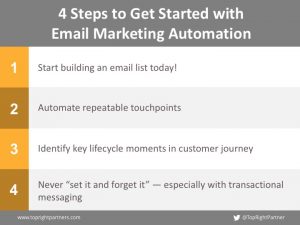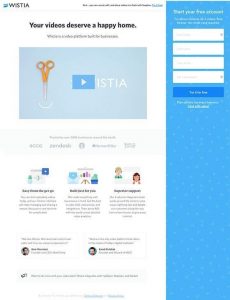Most marketers are well aware of the value of customer success stories and testimonials to their marketing efforts. Customer endorsements provide “social proof” of the benefits of your solution. This social proof is particularly powerful when the customer has a well-known and respected brand and is similar to your target customers.
But lining up customers to work with you on case studies can be a nightmare. Obstacles arise at every turn—both from within your own company and from the customer.
Internally, sales reps are protective of their customers. Sales reps won’t let marketing anywhere near their customers if they’re in the middle of a new opportunity or close to a contract renewal. They’ll shy away from recommending customers who are still implementing the product, in the middle of an upgrade, or are having some type of problem. While these are all valid concerns, they severely limit the pool of customers sales reps will be willing to offer up as potential references.
Once you’ve secured the name of a customer as a potential reference and an introduction from the sales rep, you face a new set of hurdles. Customers are often too busy to respond to requests. Their legal or communications departments may have policies that prohibit employees from endorsing other companies. Or they may simply fail to see the value of helping a vendor.
The solution requires taking a multi-prong approach for incentivizing both the sales force and customers to participate in the reference program.
Reward the sales force
Although sales reps typically understand the benefits of customer references to their sales efforts, companies nonetheless often also provide financial incentives to encourage their sales force to speak with customers about reference opportunities. Management may also encourage the sales force to ask the customer to contractually agree to do a testimonial.
Incentivizing customers
Marketing may also approach a customer directly. Your best bet is to offer them a range of options for customer reference activities that deliver value to the customer in the hopes that one of them will provide a benefit that the customer can appreciate. The following are some of the activities you can offer and the benefits they provide.
Publicity—Some customers are looking for publicity. I’ve seen this most often with smaller or less well established companies that can benefit from exposure in the trade press. Offer these customers a press release distributed over a wire service. Your public relations department can also pitch an article idea sparked by the customer’s application to appropriate trade publications. These publications are always in the market for a good story backed up by a real customer.
Now you may ask, what good is working with a smaller company no one has heard of? These customers can make excellent references when the customer has brand-name customers of its own, if the company is up-and-coming with a hip product, or if the customer’s application is particularly interesting.
Industry Recognition—The most coveted testimonials come from large, brand name customers. These can also be the most difficult case studies to secure because large companies often have policies against endorsing vendors.
One way around this obstacle is by creating your own industry excellence awards—and then writing case studies about the award winners. The awards provide value to your customer because they validate the excellence of the group that uses your product. This makes the group look good internally, and it makes their company look like an innovator within its industry.
Help Customers Demonstrate Thought Leadership–Just because company policy won’t allow customers to do a press release or case study, doesn’t mean the individuals involved in a project don’t want recognition for their efforts. One way to help your customer advocates is to give them opportunities to demonstrate their own thought leadership in a way that may not directly talk about your product, but that nonetheless allows you to associate your company with their company. You have a number of options:
- Articles—Many customers that won’t directly endorse your product will be willing to be quoted in an objective article about an industry trend or topic that will appear in your company magazine, newsletter or blog.
- Speaking engagements—Another way you can offer your customers the opportunity to display their thought leadership while having their luster rub off on your brand is through joint speaking engagements at conferences.
- Joint webinars—Webinars offer similar benefits to speaking engagements without requiring the customer to travel.
Follow Up Aggressively
All of these tactics require a tremendous amount of time, effort, and follow up. It pays to make someone responsible for chasing after the sales reps and after customers—and allowing them to devote a substantial chunk of time to this effort.
While the social proof that customer testimonials and case studies offer are priceless, getting customer buy-in and participation can be a tremendous challenge. Meeting this challenge demands a sustained effort that combines sales force incentives with meaningful value for participating customers.
What tactics does your company take to secure customer testimonials and case studies?
Business Articles | Business 2 Community
(313)




